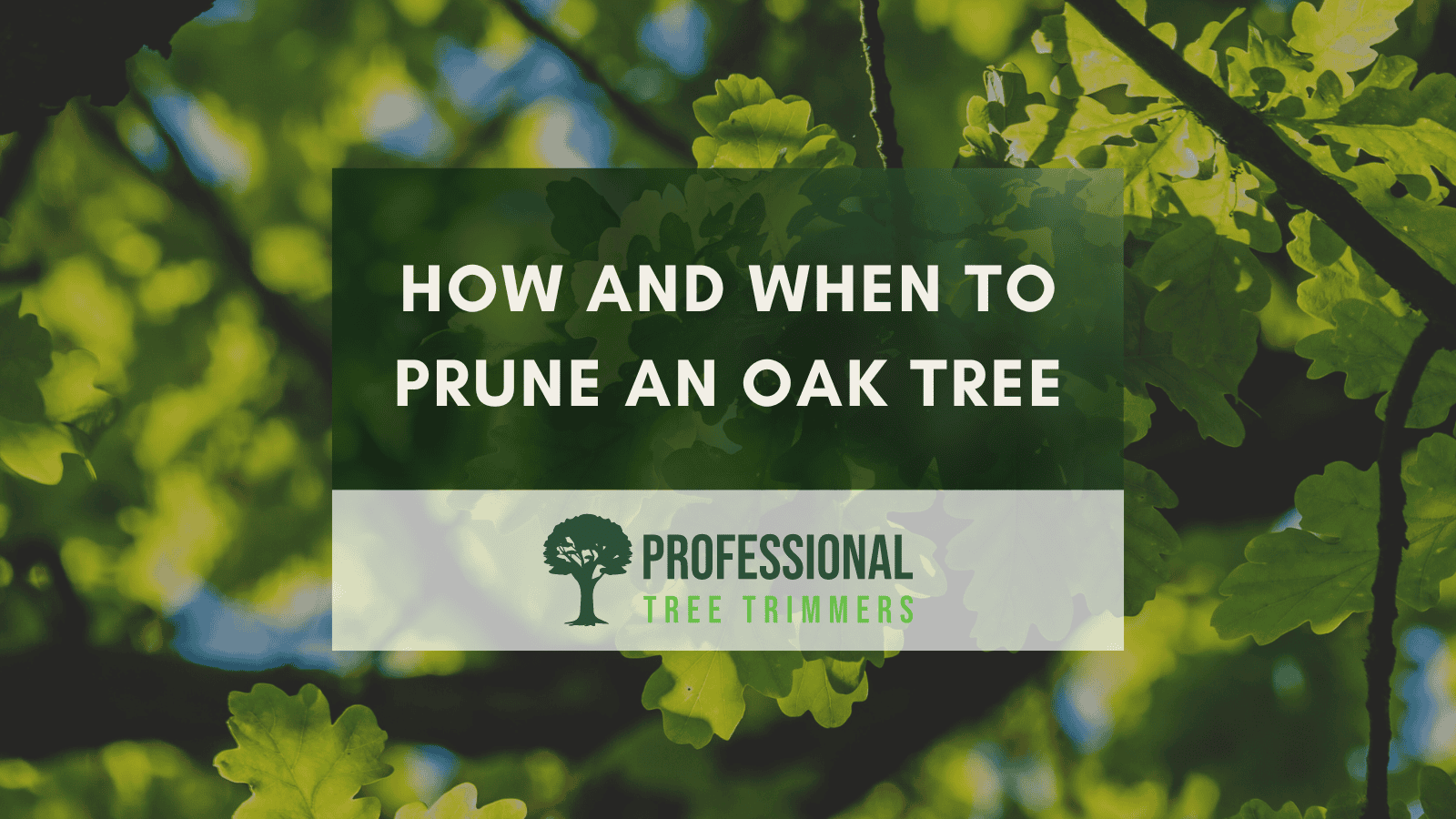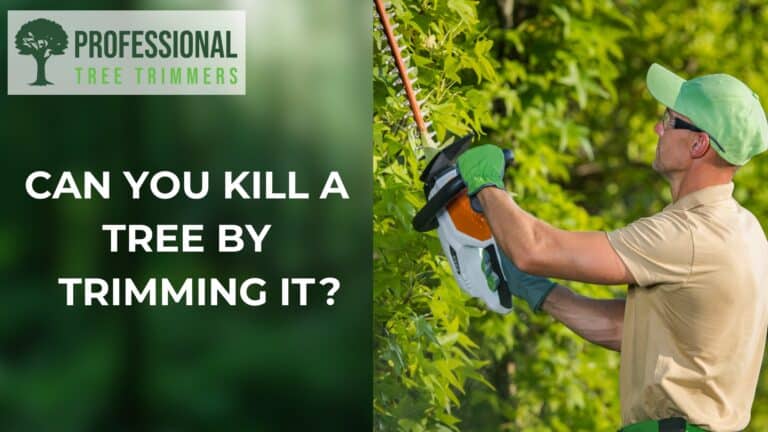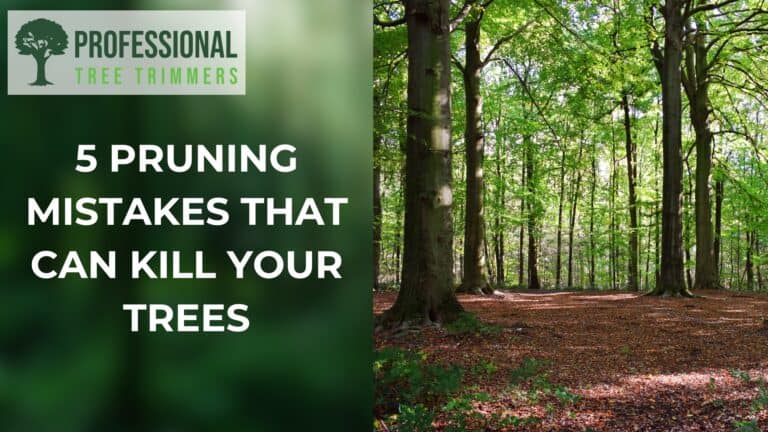Pruning oak trees is an important horticultural practice that involves selectively removing branches or stems to maintain the tree’s health, structure, and appearance. When done correctly and at the right time, pruning can enhance an oak tree’s vigor, prevent the spread of diseases, and mitigate potential safety hazards posed by dead or dying branches.
The primary purpose of pruning oak trees is to promote their overall well-being and longevity. Regular pruning helps to eliminate diseased, damaged, or rubbing branches, improves air circulation within the canopy, and allows for better light penetration. It also encourages the development of a strong, balanced structure that can withstand environmental stresses, such as high winds or heavy snow loads.
Proper pruning techniques are crucial to prevent further damage to the tree and ensure its long-term health. These techniques involve making clean cuts at specific points along the branch, avoiding flush cuts that can lead to decay, and removing no more than a quarter of the tree’s live crown in a single growing season. Adherence to these best practices minimizes the risk of introducing pathogens or causing unnecessary stress to the tree.
What Is the Best Way to Prune a Live Oak Tree?
The best way to prune a live oak tree is to do so during the dormant season, typically in mid to late winter, to minimize stress and the risk of disease. Focus on removing dead, diseased, and crossing branches, while avoiding excessive pruning, especially of the lower branches. It’s advisable to consult with a certified arborist or tree care professional for specific guidance on trimming your live oak.
Here are the key considerations when pruning a live Oak tree:
- Prepare tools: Use sharp and clean pruning tools such as hand pruners, loppers, and a saw. Make sure to disinfect your tools before and after pruning to prevent the spread of diseases.
- Assess branches: Identify and remove dead, diseased, or damaged branches first. Cut the branch at its base, just outside the branch collar. Do not leave a stub, but avoid cutting into the trunk or removing the branch collar.
- Pruning Considerations: Avoid removing more than 25% of the live oak tree’s canopy in a single year. Over-pruning can stress the tree and make it more susceptible to pests and diseases. To ensure proper pruning, remove branches that cross or rub against each other, as well as those that grow inward or downward. Aim for an open, balanced structure that allows air and light to penetrate the canopy. To create an undercut on a branch, begin by cutting 1 to 2 feet from the branch collar. This will help prevent the bark from tearing when the branch falls. Next, cut the top of the branch a few inches farther out than the undercut, ensuring a clean cut to promote healing. Start 10-12 inches away from the trunk with an undercut, and then move an inch or two further and make the second cut. This process encourages proper healing and prevents damage to the oak tree
- Seal wounds: To promote healing and prevent disease and pests from entering the tree, cover cuts with a wound dressing. Additionally, avoid leaving stubs by trimming branches back to the bark swell at the base. Leaving clean cuts will help prevent future
- Step back for evaluation: To maintain the overall appearance and balance of a tree, it is essential to assess its natural shape and health. Proper pruning should be done with the goal of preserving the tree’s natural form while also promoting its overall health.
- Clean up: After pruning, clean and disinfect your tools to prevent the spread of diseases. Use a solution of one part bleach to nine parts water, or a commercial disinfectant. To prevent the spread of disease, it is crucial to remove cut branches and debris from the area after pruning. Proper disposal of these materials ensures that any potential pathogens are not allowed to linger and cause further harm to the tree.
What Months Are Best to Trim Oak Trees?
The best months for trimming oak trees are typically from November to February. During this period, oak trees are less susceptible to diseases like oak wilt, making it safer to prune them. Pruning oak trees during the dormant season, typically from November to February, reduces the risk of disease transmission and insect damage.
When Should You Not Trim an Oak Tree?
It’s crucial to avoid pruning oak trees from March through August to protect their health and longevity. Additionally, seeking guidance from certified arborists and following proper pruning techniques can further safeguard oak trees from potential risks and ensure their well-being.
Pruning oak trees during the growing season, particularly in spring and summer, is not recommended due to the increased risk of contracting oak wilt disease. This fungal disease, caused by Bretziella fagacearum, spreads through the sap of freshly pruned or wounded oak trees, primarily via beetles.
Once infected, oak trees can transmit the disease to nearby oaks through their root systems. Red oak species are highly susceptible, often succumbing to the disease within weeks, while white oak species are less vulnerable.
What Are Some Common Mistakes to Avoid While Pruning Oak Trees?
Some common mistakes to avoid common mistakes are improper cuts, over-pruning, and using incorrect tools to ensure the tree’s health and longevity. Other common pruning mistakes to avoid are heavy pruning during the growing season, using dull tools, topping a tree, and over-pruning at any time of the year.
Here are the common Mistakes to Avoid While Pruning Oak Trees:
- Making improper cuts: Flush cuts that remove the branch collar can inhibit proper sealing and healing. Stub cuts that leave protruding branch stubs are also problematic as they can’t seal properly and are entry points for decay. Proper pruning cuts should be made just outside the branch collar.
- Over-pruning any time of year: Removing too many branches at once can severely stress and potentially kill an oak tree. As a general rule, no more than 25% of the crown should be removed in any pruning season. Over-pruning leaves the tree vulnerable to sun scald, pests, and diseases.
- Pruning at the wrong time: Oaks should only be pruned during their dormant season, ideally in late fall or winter. Pruning in spring can expose open wounds to oak wilt disease transmitted by insect vectors. Pruning in summer stresses the tree when it needs its full energy reserves.
- Topping trees: Topping, where all the main branches are cut back to stubs, is an extremely damaging and improper pruning practice. It leaves the tree unsightly, unstable, vulnerable to decay, and trying to re-grow a dense mass of weak branches.
- Spreading disease: Failing to disinfect pruning tools between trees can spread potential pathogens like oak wilt fungus. Tools should be cleaned with 70% alcohol or a disinfecting solution, especially when pruning oaks.
- Not using the right tools: Using dull, improper pruning tools can tear bark and leave jagged wounds that don’t heal well. Invest in quality bypass pruners, handsaws, and pole pruners designed for the size of branches you’ll be cutting.
What Happens if You Top an Oak Tree?
Topping an oak tree is extremely damaging and one of the tree maintenance mistakes people do. It removes the tree’s primary branches, drastically reducing its food production ability via photosynthesis. This shocks the tree, making it vulnerable to insects, diseases like oak wilt, and decay. Topping alters the tree’s natural shape and structure, promoting unstable regrowth prone to breaking. A topped oak’s lifespan is significantly shortened.
Should I Cut the Lower Branches of An Oak Tree?
Trimming lower branches on an oak tree can be beneficial when done properly. It promotes better structure by allowing upper branches to spread out. It also increases airflow through the canopy and lets more sunlight reach the inner branches. However, only remove a moderate number of low branches gradually over several years to avoid stressing the tree.
Why Do Oak Trees Drop Small Branches?
Oak trees will naturally shed small branches and twigs for a few different reasons. Twig pruner beetle larvae tunneling causes many small branch tips to drop. Squirrels may also purposely clip off thin branches while harvesting acorns. Trees self-prune smaller, shaded interior branches as well to improve airflow and redistribute nutrients to stronger growth. Moderate shedding is normal.




